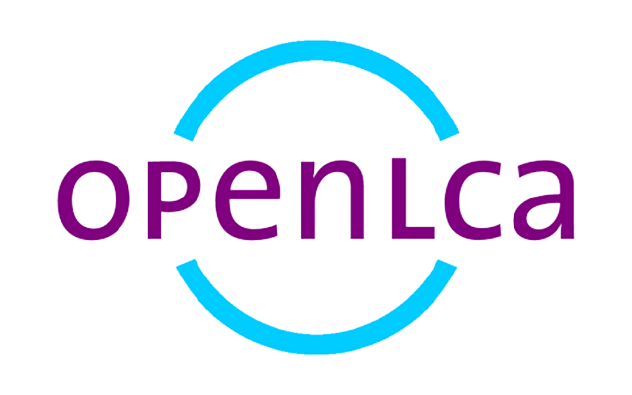Carbon Minds has updated their cm.chemicals database, now in version 2.00, in October this year, and is planing to release further updates every March, starting next year. You can read the latest documentation, and see more information about the database, including pricing, in openLCA Nexus.
Read below for further information on major data updates, new methodological developments, and updated datasets.
Implementation in openLCA
The database works with its own reference flow system, which means that it cannot be used with the openLCA LCIA Method package, but rather it already contains the methods to be used directly within the database. A new LCIA Method directly provided by Carbon Minds, “Carbon Minds ISO 14067 (based on IPCC 2021)”, has also been included to work with the database.
New Features
ISO 14040/44/67 and Together for Sustainability (TfS) certification
- An extended TÜV review and recertification of the cm.chemicals database methodology document, against the ISO standards 14040/44/67 was conducted.
- Additionally, the new review and certification encompasses the compliance with the Together for Sustainability (TfS) guideline for Product Carbon Footprint calculations.
Implementation of the latest IPCC 2021 characterization factors in compliance with ISO 14067 and TfS
- All carbon footprints are now calculated utilizing the latest IPCC 2021 characterization factors for the 100-year Global Warming Potential (GWP).
- Additionally, biogenic CO2-removals and -emissions are accounted with a characterization factor of -1/+1.
- Separation of fossil GHG emissions, biogenic GHG emissions, biogenic GHG removals, and GHG emissions and removals resulting from land use change, in compliance with ISO 14067 and TfS.
Data update – A Complete Chemical Value Chain Update From Oil&Gas To Chemicals
Natural gas update
- Incorporating data from 19 additional countries and regions, this update utilizes the latest natural gas datasets from the ecoinvent database version 3.9.1.
- The incorporated data integrates the most recent scientific insights, including gas flaring emissions and vented and fugitive emissions.
Crude oil update
- Incorporating data from 35 additional countries and regions by modeling the crude oil extraction according to the life cycle inventory of crude oil extraction developed by ESU services.
- The incorporated data integrates the most recent scientific findings, including gas flaring emissions and vented and fugitive emissions.
Chemical feedstock and industry data update
- The modeling of the subsequent chemical feedstock production has improved, incorporating more regionalized raw materials like natural gas and crude oil.
- Market data (data on production locations, volumes, and technologies used) and trade data (data bilateral trading activities between countries) have been updated to reference year 2021.
Methodological Changes for TfS-Compliance
Redefined cut-off rules
- The cut-off rules are redefined such that consumed precious metal catalysts are now consistently included in the system boundaries.
Latest IPCC 2021 characterization factors implementation
- Implementation of the latest IPCC 2021 characterization factors in compliance with ISO 14067 and TfS.
Revised allocation procedure
- A revised general procedure for the allocation according to other criteria now allocates environmental exchanges based on mass or price of products, depending on price deviations between coproducts[1].
- Specific allocation procedures have been introduced for various processes:
- For processes co-producing hydrogen, allocation via energy content shall be applied unless one or more products have an energy content of zero.
- For processes co-producing CO2, the system expansion via avoided burden approach is applied. An avoided operation of the Direct Air Capture process is assumed for the avoided burden.
- Steam cracking processes are now allocated according to the official Product Category Rule (PCR), Plastics Europe’s recommendation on Steam Cracker allocation[2].
- Chlor-alkali electrolysis processes are now allocated according to the official Product Category Rule (PCR), The Chlor-Alkali Process by Euro Chlor[3].
- MDI and TDI producing processes are now allocated according to the official Product Category Rule (PCR), The Eco-profile of toluene diisocyanate (TDI) and methylene diphenyl diisocyanate (MDI) by ISOPA[4].
Get cm.chemicals packages for openLCA
For more information on all available data packages and the scope of datasets in each data package, please visit “documents tab” in openLCA Nexus.
Acquire the database in openLCA Nexus: https://nexus.openlca.org/database/Carbon%20Minds
[1] WBCSD, 2014. Lifecycle Metrics for Chemical Products. A guideline by the chemical sector to assess and report on the environmental footprint of products, based on life cycle assessment.
[2] Life Cycle and Sustainability working group of PlasticsEurope, 2017. PlasticsEurope recommendation on Steam Cracker allocation.
[3] Euro Chlor, 2022. Chlorine (The Chlor-Alkali Process). An Eco-profile and Environmental Product Declaration of the European Chlor-Alkali Industry. Final report.
[4] ISOPA, 2021. Eco-profile of toluene diisocyanate (TDI) and methylene diphenyl diisocyanate (MDI).

